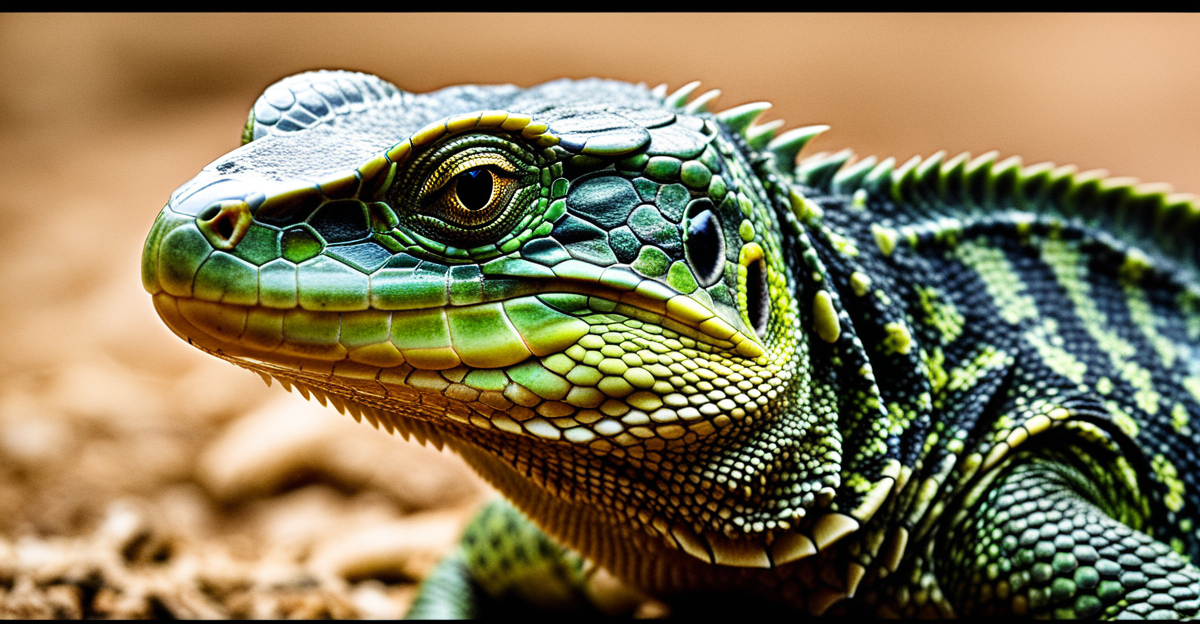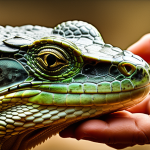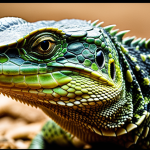Understanding Dehydration in Reptiles
Dehydration can significantly impact reptile health, and recognizing symptoms early is crucial. Dehydration symptoms in reptiles often manifest in both physical and behavioral changes, serving as critical indicators to address hydration needs promptly.
Common Dehydration Symptoms
Physically, dehydration in reptiles can show through sunken eyes and reduced skin elasticity. If you gently pinch the skin and it doesn’t return to its normal shape quickly, this could be a sign of dehydration. Additionally, reptiles may present with dry or sticky tongues and gums, impacting their overall hydration needs.
Sujet a lire : Conquering Lyme Disease in UK Horses: The Ultimate Diagnostic and Treatment Handbook
Behavioral Changes in Dehydrated Reptiles
Behavioral shifts such as reduced appetite or altered basking habits are also indicative of dehydration. Reptiles might also exhibit increased hiding or a significant drop in activity levels. These symptoms suggest the reptile is trying to conserve energy, which underlines how crucial addressing their hydration needs is.
Long-Term Health Impacts
Over time, dehydration can lead to serious health concerns, affecting organ function and longevity. An ongoing lack of adequate hydration can reduce a reptile’s quality of life, making proactive monitoring and care essential in maintaining their overall health. Understanding and mitigating dehydration symptoms can significantly improve a reptile’s health outcomes.
A lire également : Detecting Dehydration in Reptile Companions: Essential Warning Signs and Habitat Tips for Optimal Health
Key Indicators of Dehydration
When assessing reptile behavior for signs of dehydration, a few key indicators become particularly poignant. Identifying these symptoms early can vastly improve the care and health of your reptile.
Physical Signs
The physical characteristics of dehydrated reptiles offer the most immediate clues. Sunken eyes and loss of skin elasticity serve as major red flags. When the skin is pinched, it should swiftly return to its place; a slow response indicates dehydration. Additionally, the appearance of the mouth and tongue is a telling sign; a dry or sticky mouth often coincides with dehydration. Posture and activity levels also suffer; if your reptile is lethargic and reluctance to move, these too could be warning signals.
Behavioral Indicators
Behavioural changes offer subtle, yet essential hints. A reduced appetite or changes in feeding behavior can suggest that hydration needs aren’t being met. Noticing alterations in basking habits or peculiar movement patterns can shed light on potential hydration issues. Reptiles often retreat to secluded spots when dehydrated, resulting in increased hiding or notable lethargy. Monitoring these indicators provides critical insight into their well-being and hydration status.
Creating a Hydration-Friendly Environment
Establishing a hydration-friendly environment is essential for maintaining optimal reptile health. Central to this is controlling habitat conditions, especially ensuring appropriate humidity levels. Reptile habitats must replicate natural climates closely to meet their specific hydration needs.
Humidity plays a critical role, as insufficient levels can result in dehydration symptoms like flaky skin or shedding issues. To maintain ideal humidity, deploying techniques such as misting or using water dishes can create a more nurturing atmosphere. These methods not only provide hydration directly but also assist in maintaining ambient moisture.
Choosing suitable substrates is equally vital. Selecting substrates that retain moisture — like coconut husk or sphagnum moss — ensures a consistent environment that supports hydration. These materials help lock in humidity, allowing reptiles to absorb moisture naturally.
Adjustments in surrounding environmental factors are necessary, too. Carefully positioning water sources and providing shaded areas aid in regulating moisture levels effectively. Monitoring and adjusting these components regularly is key to promoting hydration healthily and sustainably, ensuring your reptiles thrive in their habitat.
Preventive Measures
Proactivity is key in ensuring reptile wellness and preventing dehydration. Regular health checks help monitor hydration status, allowing for timely interventions. During these checks, observe any changes in physical characteristics, like eye condition or skin elasticity, as early indicators.
Adjustments in environmental conditions, such as proper humidity levels, are necessary, especially with seasonal shifts. As temperatures fluctuate, maintaining optimal habitat conditions ensures that reptiles retain their hydration effectively. Regularly assess and modify air circulation and ambient humidity to align with your reptile’s natural habitat needs.
Establishing consistent care routines plays a crucial role in dehydration prevention. Attend to habitat maintenance diligently by cleaning and replacing water sources frequently and monitoring water quality. This not only facilitates a safe environment but also promotes access to fresh, clean water, essential for sustaining good health.
Incorporate care routines that incorporate diverse hydration techniques. Integrating wet foods and hydrating substrates fosters hydration and improves overall health. An environment tailored to meet specific hydration needs ensures that reptiles thrive physically and behaviorally, contributing to long-term wellbeing.
Effective Hydration Methods
Addressing hydration techniques is crucial for maintaining reptile health. Central to this process is establishing reliable water sources. Clean, accessible water should be a staple; replace the water daily to prevent contamination. Ideal water types include dechlorinated tap or bottled water, critical for ensuring safe hydration.
Providing Fresh Water
Ensuring accessible water sources tailored to your species aids in reducing dehydration risk. Daily checks and routine cleaning enhance water quality, preventing bacteria growth. Consider shallow dishes for easier access, changing water frequently to maintain freshness.
Supplementing Hydration
Introducing wet foods, like fruits or vegetables, complements hydration naturally. They supply additional moisture, supporting adequate fluid intake. In urgent cases, electrolyte solutions can assist reptiles with severe hydration needs. This approach provides immediate relief, stabilizing their condition.
A varied diet enhances hydration, giving reptiles necessary nutrients while maintaining moisture balance. Incorporate diverse food textures and types to align with specific dietary needs, fostering better overall hydration. By focusing on these methods, you ensure that reptiles remain healthy and thrive in their habitats.
Introduction: Ensuring a Healthy Environment for Reptiles
Maintaining reptile wellbeing through adequate hydration is pivotal. Proactive care strategies, focused on health maintenance, significantly enhance reptile longevity. By prioritising hydration, pet owners can prevent dehydration, avoiding severe health repercussions.
The Significance of Hydration
Proper hydration practices lead to long-term health benefits, ensuring reptiles thrive in their environments. Maintaining reptile health involves regulating their hydration needs to prevent issues such as organ dysfunction and compromised longevity. Addressing these needs proactively supports optimal health maintenance.
Building Knowledge on Reptile Care
Continuous education in reptile care empowers owners, leading to improved health outcomes. Understanding the intricate hydration needs is key to enhancing reptile wellbeing. By remaining engaged with educational resources and adapting care routines as necessary, pet owners can foster healthier, more fulfilling lives for their reptiles.
Implementing Sustainable Practices
Integrating sustainable hydration methods in daily routines highlights the importance of health maintenance. Regular checks, suitable habitat adjustments, and consistent care routines together form the foundation of pet ownership that prioritizes reptile wellbeing. These practices ensure a nurturing environment, equipped to meet the diverse and intricate needs of these creatures, leading to better health outcomes.











